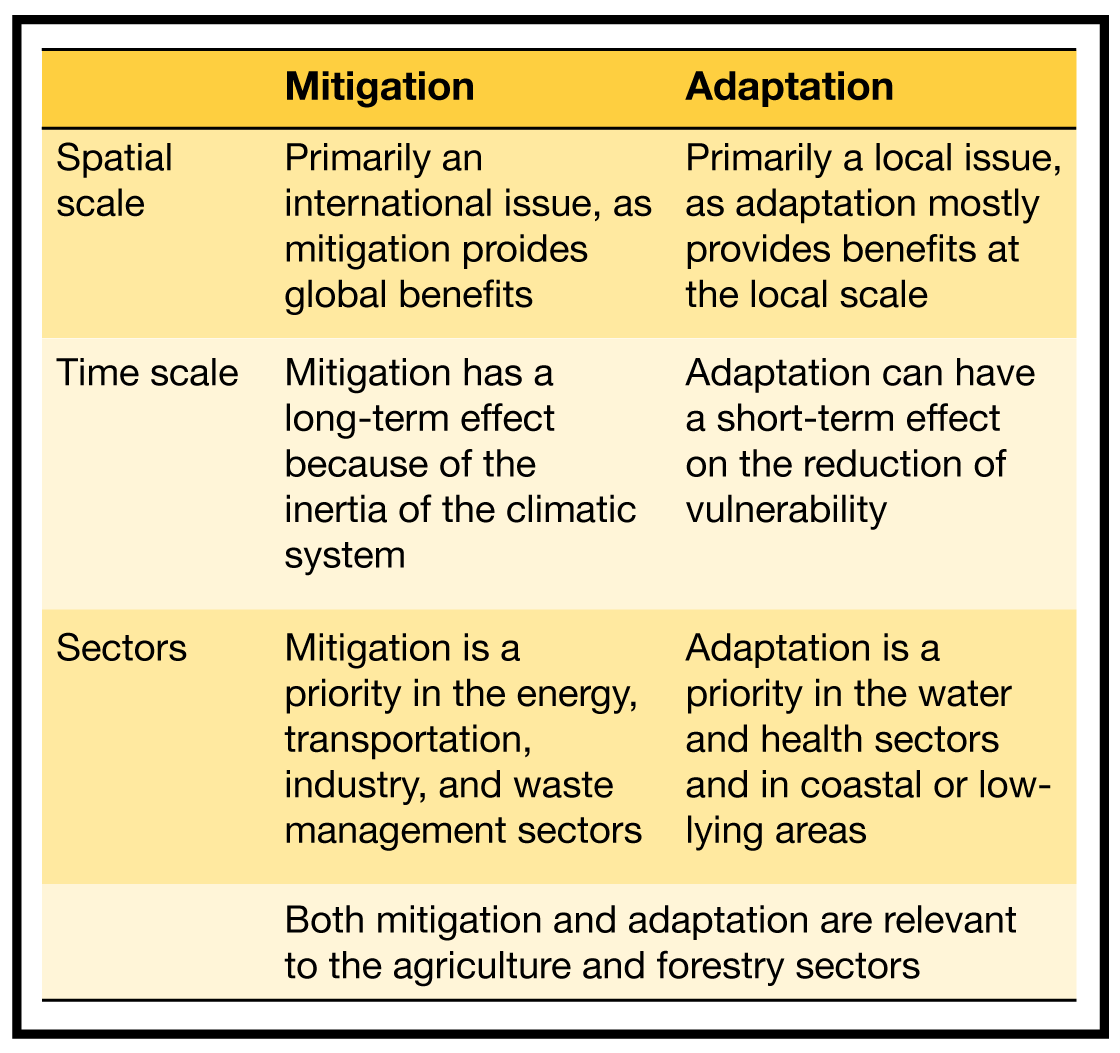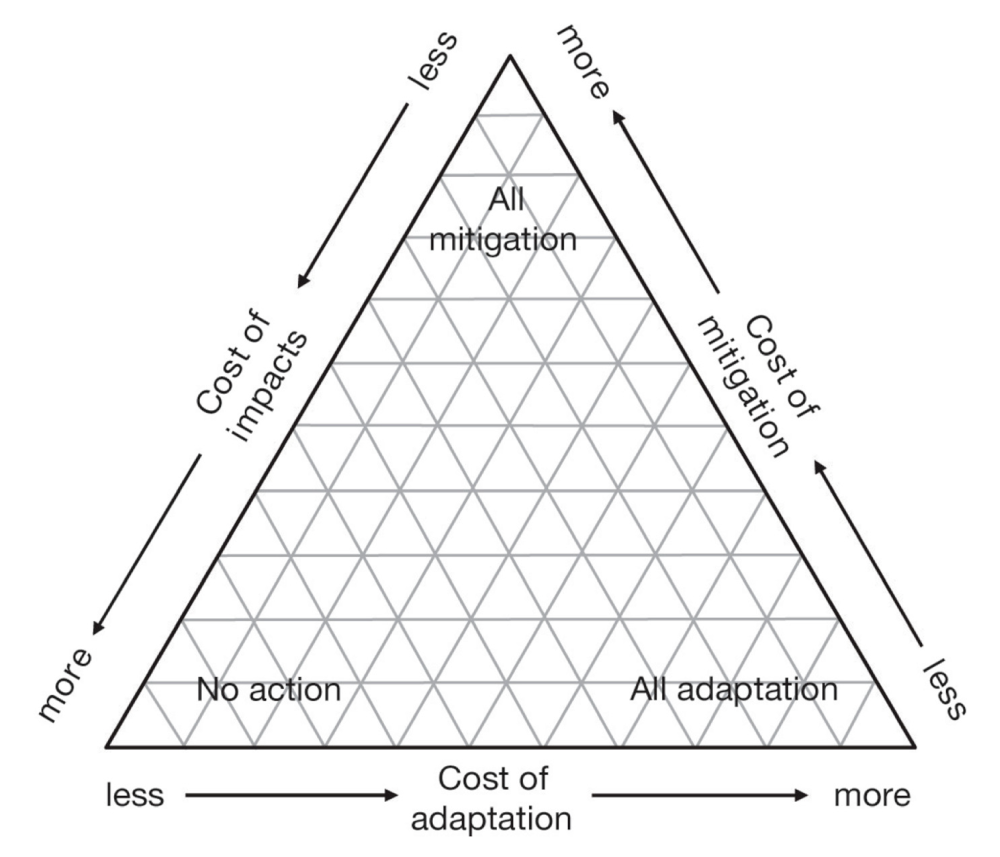Last week, we spent some time thinking about the differences between mitigation and adaptation as they relate to climate change. Let's revisit that thinking for a moment.
Mitigation is our big-picture, tackling the problem at its root cause, way to address climate change. Adaptation is our response to the impacts of the climate we've already committed to changing. Mitigation is longer term and occurs most effectively at broader geographic scales. Adaptation is inherently a more localized endeavor.

| Mitigation | adaptation | |
|---|---|---|
| SPACIAL SCALE | Primarily an international issue, as mitigation provides global benefits | Primarily a local issue, as adaption mostly provides benefits at the local scale |
| TIME SCALE | Mitigation has a long term effect because of the inertia of the climatic system | Adaptation can have a short-term effect on the reduction of vulnerability |
| SECTORS | Mitigation is a priority in the energy, transportation, industry and waste management sectors | Adaptation is a priority in the water and health sectors and in coastal or low lying areas |
We also talked about the relative costs of focusing our climate change responses more heavily toward one (or neither) of mitigation or adaptation and discovered, you really get what you pay for.

Now, we prepare to head into our final lesson on sustainable development, let's think about the outcomes of both mitigation and adaptation measures, and where we see opportunities for overlap. In other words, what are some actions we can take that provide both mitigation of the causes of climate change (i.e., reduce our emissions) and also make us more resilient to impacts?
This Venn diagram is from the City of Calgary's Climate Program, and it highlights efforts they're taking to both mitigate and adapt to climate change. But what I'd like you to focus on is the area of overlap - look at how implementing water conservation measures, supporting local food, emphasizing education, and other actions create benefits both in reducing emissions and building resiliency to impacts (not to mention probably making Calgary a nicer place to live along the way).

| Mitigation | Both | Adaption |
|---|---|---|
| Sustainable Transportation | Water Conservation | Disaster Management & Business Continuity |
| Clean Energy | New Energy System | Flood Protection |
| Energy Efficiency | Local Food | Infrastructure Upgrades |
| Education | ||
| Complete Communities | ||
| Urban Forest |
